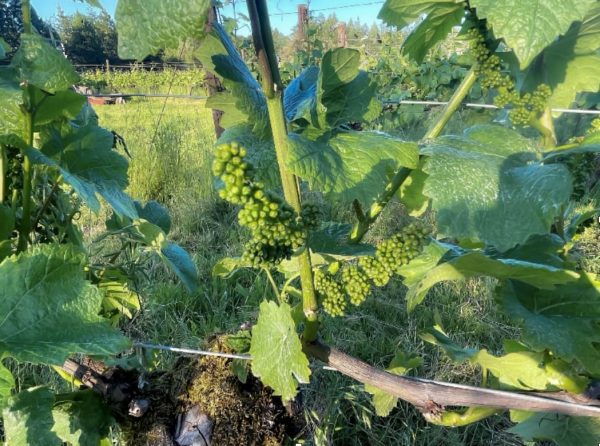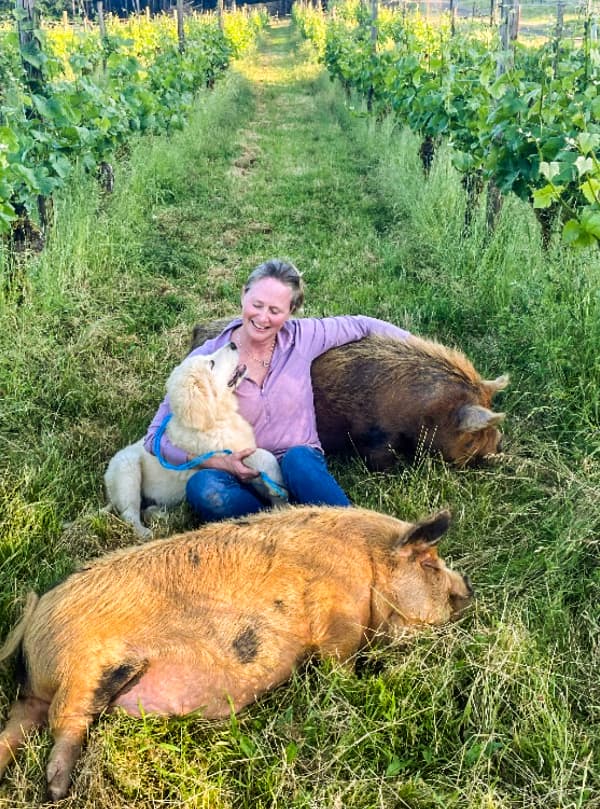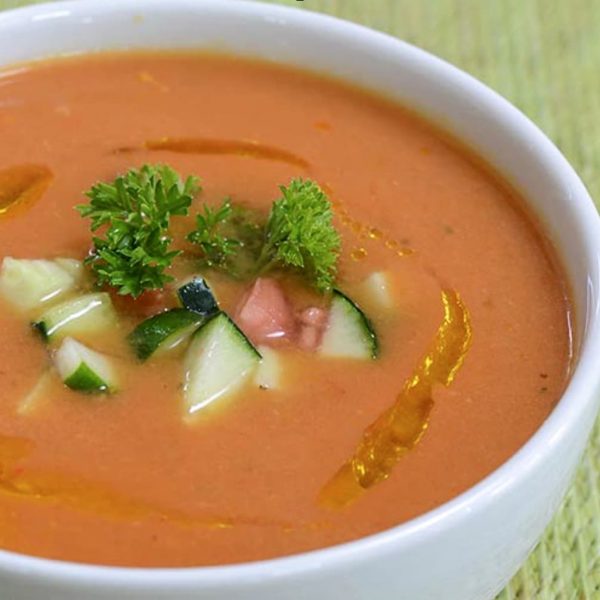Summer sunshine has finally arrived, and the vineyards are lush and green, beginning flowering and fruit set. Yes, the late frost we experienced will decrease yields, but there is still great potential to make wonderful wines from 2022. Every vintage is different, and the joy of experiencing hand-crafted wine is a bit like opening a time capsule and revisiting the past.

June 2022 Grape Growth at Compton Family Farms close to flowering
Here’s a brief overview of the past vintages you’ll enjoy in our Compton Wine Club summer of 2022 release.
The 2014 vintage in Oregon may be remembered as the vintage of a lifetime. From bud break through harvest, growers and winemakers throughout the state experienced an almost ideal growing season that delivered a record amount of exceptional, balanced fruit. The 2016 growing season continued to push the envelope for defining the new normal in Oregon as one of the earliest on record. An unusually warm spring gave way to moderate summer conditions, providing even growing conditions through véraison. Despite the early start 2016 produced outstanding fruit quality with wonderful concentration and complexity with characteristic natural acidity.
The 2017 vintage was completely different from the previous three years of earlier than normal harvests. The wet, cool spring delayed flowering for the region’s vines until late June, setting the stage for a later harvest. Warm, dry conditions prevailed through the summer with a higher-than-average fruit set. We have found that our 2017 wines needed more time to open up, and now they are lovely with great acidity.
The 2018 wines stand out as phenomenal. February and March brought enough coolness and rain to slow the vines down and provide enough soil moisture going into spring. Late bud break was due to a slightly wet and cooler April in 2018, bloom and véraison caught up quickly soon after. The fruit set was good, harvest was slow and steady which resulted in truly dialed in fruit composition with sugar levels, acidity, and pH all close to average. Cool autumn weather allowed grapes to hang and develop complex flavors on the vine while retaining fresh acidity.
By June of 2020 we knew there would be fewer wine grape tons harvested this vintage due to a cool damp spring. Light fruit set was compounded by cool conditions in early summer making smaller berries. The overall quality of the fruit was outstanding, with the smaller clusters and berries giving great color, concentrated flavors, at desired sugar levels with good acidity. For us at Compton Wines, some of the higher elevation vineyards were affected by the fires. We typically make over eight different Pinot Noirs each year, but in 2020 we only made 3 Pinot Noirs, selecting just the best lots.
The 2021 growing season was just right, with warm days and cool nights ideal for our region. Rain hit the Willamette Valley during bloom, affecting the delicate blossoms and resulted in a light fruit set. Harvest started early and was steady for six weeks, resulting in truly dialed-in fruit composition with balanced sugar levels and fresh acidity.
We hope you will enjoy tasting and time-traveling with the Compton Wines we have selected for you.
Thank you for your support and have a wonderful summer!
– Tabitha and Matt Compton

SUMMER 2022 CLUB
THE WINES
Garden Series
Pinot Gris, Newton Creek Vineyard, 2021
$22 / $17.60 Club
Newton Creek Vineyard is the closest to our Winery in Philomath and we saved this special single-origin Pinot Gris for our Wine Club members. Whole cluster pressed and fermented in stainless steel with a long cool fermentation to retain delectable fruit aromas and flavors.
Garden Series
Sauvignon Blanc, Croft Vineyard, 2021
$22 / $17.60 Club
100% Sauvignon Blanc, organically grown by our friends at Croft Vineyard. The fruit was hand-picked then whole cluster pressed. Juice was fermented in a combination of Stainless-steel tank, neutral wood barrels and Concrete Egg tank. The blend of the three fermenters gives the wine a wide range on the palette with balance.
Garden Series
Rosé of Pinot Noir, 2021
$18 / $14.40 Club
We intentionally harvest Pinot Noir earlier to make Rosé. Half of the fruit is whole cluster pressed and the other half is soaked on the skins overnight. Fermented in stainless steel. This vintage offers hints of fresh strawberries, depicted in the charming wildflower bouquet on the label.
Garden Series
Cellar Select Pinot Noir, 2020
$28 / $22.40 Club
Matt Compton’s blend of the best Pinot Noir of the vintage. Each vineyard is fermented and aged separately in oak barrels, allowing for many possibilities during the blending process.
Garden Series
Pinot Noir 2018, Willamette Valley
90 Rating, Wine Enthusiast
$30 / $24 Club
This Pinot Noir is a blend of Pinot Noir clones from four vineyards: Compton Farms, Hoot & Howl, Mary’s Peak and BoVine. Fruit from each vineyard was fermented separately then aged in French oak barrels for over ten months before being blended and bottled.
Old Vine Series
Llewellyn Cuvée Pinot Noir 2017
$38 / $34.20 2-Club / $30.40 6-Club
The vineyards providing fruit for the Llewellyn Cuvée have alluvial and marine sedimentary soils which grow Pinot Noir that exhibits voluptuous and denser dark red berry and blue/black fruit with darker floral earth tones and bigger, heavier tannins. Llewellyn Cuvée Pinot Noir is aged 18 months in French oak barrels before blending and bottling.
Old Vine Series
Alpine Cuvée Pinot Noir 2016
93 Rating, PinotFile
$38 / $34.20 2 Club / $30.40 6 Club
Old Vine dry-farmed Pommard, Wädenswil, 777 and 667 Pinot Noir clones from south-facing slopes in the Monroe, Oregon area. Soils are Basalt and Red Jory series volcanic soils that typical show redder fruit aromas and flavors and elegant tannins. Alpine Cuvée Pinot Noir is aged 18 months in French oak barrels before blending and bottling.
Old Vine Series
Llewellyn Cuvée Pinot Noir, 2014
91 Rating, Wine Enthusiast
$45 / $40.50 2-Club / $36 6-Club
The 2014 vintage in Oregon may be remembered as the vintage of a lifetime. We saved a few cases in our Library for our club members!
SUMMER 2022 RECIPE
GAZPACHO OREGON STYLE
This cold soup from Spain is the perfect use for ripe summer tomatoes. The variety of tomato is not so important, but they better be ripe and juicy! Advance prep time is required to soak the bread and chill and meld the flavors of the soup. It will taste even better the next day.
If you would like to freeze gazpacho to enjoy after tomato season, just eliminate the bread. Defrost the soup, soak the bread in it till soft, then re-blend with additional olive oil and vinegar to taste
Suggested wine pairings
Rose of Pinot Noir
Sauvignon Blanc
Pinot Gris
younger Pinot Noirs, 2017 and on.

makes 4-6 servings
Ingredients
• 2 pounds ripe tomatoes, remove stem, core and extra seeds
• 1 small (1/2 lb) cucumber, peel skin and remove seeds
• 1 medium green bell pepper, remove core and seeds
• 2 garlic cloves, peeled (or to taste)
• ¼ small red onion diced (optional)
• 3 tablespoons olive oil
• 2 tablespoons sherry vinegar
• 1 teaspoon fine sea salt
• 1/2 teaspoon freshly cracked black pepper
• 1/2 teaspoon ground cumin
• 1 thick slice of white bread (great use for stale bread!)
• Garnish as desired with finely diced onion, homemade croutons, chopped fresh herbs, a drizzle of olive oil, or any leftover finely diced gazpacho ingredients
Directions
Place your bread at the bottom of the large bowl and prep the tomatoes and cucumber over it, catching as much of the juices as possible. A sprinkle of salt will help to draw out the moisture. Let the bread soak in the juices for about an hour. You can add a splash of water if needed. Many Gazpacho recipes will tell you to soak the bread in water and then squeeze it out. I much prefer this method!
Next add the pre-soaked tomato, cucumber, and bread mixture to your blender along with the rest of the ingredients. Blend starting low until you achieve a smooth consistency. You can add a small amount of water if you’d like a thinner gazpacho. For the smoothest texture, you can strain the Gazpacho through a sieve, using a spoon to force it through. Taste and adjust seasoning to your liking, but the true test will be after 3 – 24 hours of chilling in the refrigerator. Pour the soup into a covered, non-reactive container like a large glass jar and refrigerate for 3 – 24 hours.
Serve cold with or without garnishes: finely diced onion, homemade croutons, chopped fresh herbs, a drizzle of olive oil, or any leftover finely diced gazpacho ingredients.



